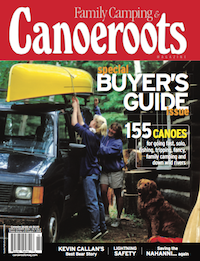On March 2nd the Supreme Court of Canada overturned a Montreal school board’s decision and ruled that Gurbaj Singh Multani should be allowed to go to class wearing his kirpan.
Five years ago, when Gurbaj was 12, his ceremonial knife accidentally fell onto the grass in the playground. If he’d been quicker to get it back in its sheath, the bell would have rung and he would have gone to class. Instead a teacher spotted Gurbaj’s dagger.
The school board said wearing a kirpan violated the school’s safety code, which prohibited the carrying of weapons. Also on school boards’ lists of prohibited weapons is the Swiss army knife.
Gurbaj and his family, all Orthodox Sikhs, won their case because the kirpan is a religious symbol. Even with the red and white cross and the millions of people who swear by them, no court would consider Swiss army knives a religious symbol. To young boys, however, (and some girls too) receiving one is a rite of passage. To a 10-year-old, a Swiss army knife is the world. It is a pocket full of adventure.
A kid with a Swiss army knife is a kid who can pick his teeth, cut his nails, open a can of beans or a bottle of pop. he can saw a tree or whittle a marshmal- low stick; remove a sliver or cut some rope. There are so many good uses for a pocketknife, especially when camping, and so many good lessons we can teach our kids about respecting knives and using them properly.
Using a jackknife safely around camp, or any other place for that matter, you could follow the Boy Scout tips for knife safety. Scouts learn how to open, close, clean and hand their pocketknives to someone else. They always cut away from themselves and cut slowly so the knife won’t slip. and they always maintain their circle of safely, working at least an arm’s distance from anyone else. Kids who learn to respect a pock- etknife understand that it is a sharp cut- ting tool, not a toy and certainly not a weapon.
Children receive their first knife, like I did, from their dad, grandfather or uncle, often on a special birthday. With it comes a trusting look and a pat on the back that says, I know you’re old enough to be careful and look after this.
My first pocketknife was a Swiss army camper. It was red of course with a spread of 13 useful tools. For a year I was never without it. But like Gurbaj I had my knife taken away in school; it probably still lives in the top drawer of Mr. Loker’s wooden desk. Even in the late ’70s at a rural public school it was unacceptable for a kid who didn’t have a pair of scissors to pull out his jackknife and cut a piece of string.
By the time Loker waddled over to my desk to make the bust I’d cut the string, folded the knife and had it back in my pocket. Loker told me to hand it over; it was policy; there was something he called the greater good; and what if everyone carried a knife in their pocket?
I thought for a minute before answering, and then told him that if everyone carried a knife in their pocket nobody would ever need scissors, or screwdrivers, or bottle openers, or tooth picks, or nail files, or…




